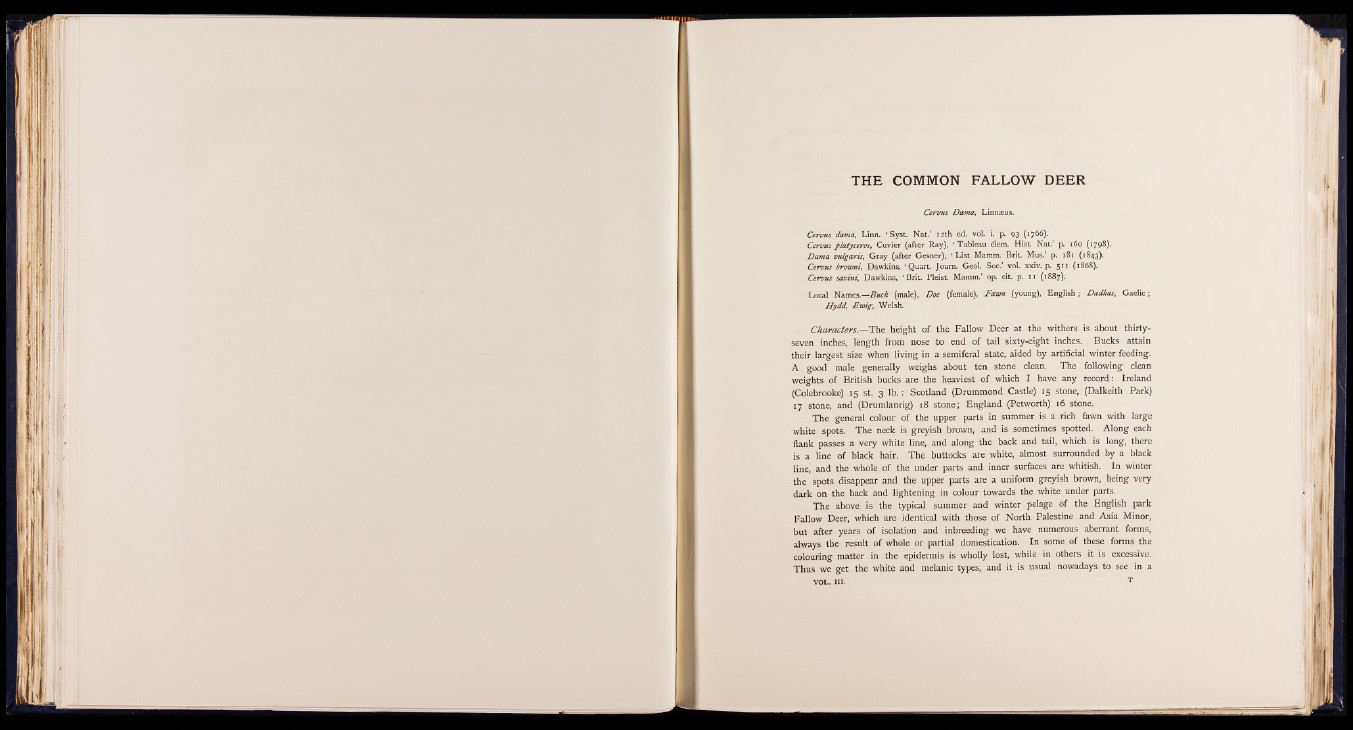
THE COMMON FALLOW DEER
Cervus Dama, Linnaeus.
Cervus dama, Linn. ‘ Syst. Nat.’ 12th ed. vol. i. p. 93 (1766).
Cervus platyceros, Cuvier (after Ray), ‘ Tableau 6lem. Hist. Nat.’ p. 160 (1798).
Dama vulgaris, Gray (after Gesner), ‘ List Mamm. Brit. Mus.’ p. 181 (1843).
Cervus browni, Dawkins, ‘ Quart. Joum. Geol. Soc.’ vol. xxiv. p. 511 (1868).
Cervus savini, Dawkins, ‘ Brit. Pleist. Mamm.’ op. cit. p. 11 (1887).
Local Names .— B u ck (male), Doe (female), Fawn (young), English; Dadkas, Ga elic;
Hydd, Ew ig, Welsh.
Characters.— The height of the Fallow Deer at the withers is about thirty-
seven inches, length from nose to end of tail sixty-eight inches. Bucks attain
their largest size when living in a semiferal state, aided by artificial winter feeding.
A good male generally weighs about ten stone clean. The following clean
weights of British bucks are the heaviest of which I have any record: Ireland
(Colebrooke) 15 st. 3 lb .: Scotland (Drummond Castle) 15 stone, (Dalkeith Park)
17 stone, and (Drumlanrig) 18 stone; England (Petworth) 16 stone.
The general colour of the upper parts in summer is a rich fawn with large
white spots. The neck is greyish brown, and is sometimes spotted. Along each
flank passes a very white line, and along the back and tail, which is long, there
is a line of black hair. The buttocks are white, almost surrounded by a black
line, and the whole of the under parts and inner surfaces are whitish. In winter
the spots disappear and the upper parts are a uniform greyish brown, being very
dark on the back and lightening in colour towards the white under parts.
The above is the typical summer and winter pelage of the English park
Fallow Deer, which are identical with those of North Palestine and Asia Minor,
but after years of isolation and inbreeding we have numerous aberrant forms,
always the result of whole or partial domestication. In some of these forms the
colouring matter in the epidermis is wholly lost, while in others it is excessive.
Thus we get the white and melanic types, and it is usual nowadays to see in a
VOL. III.